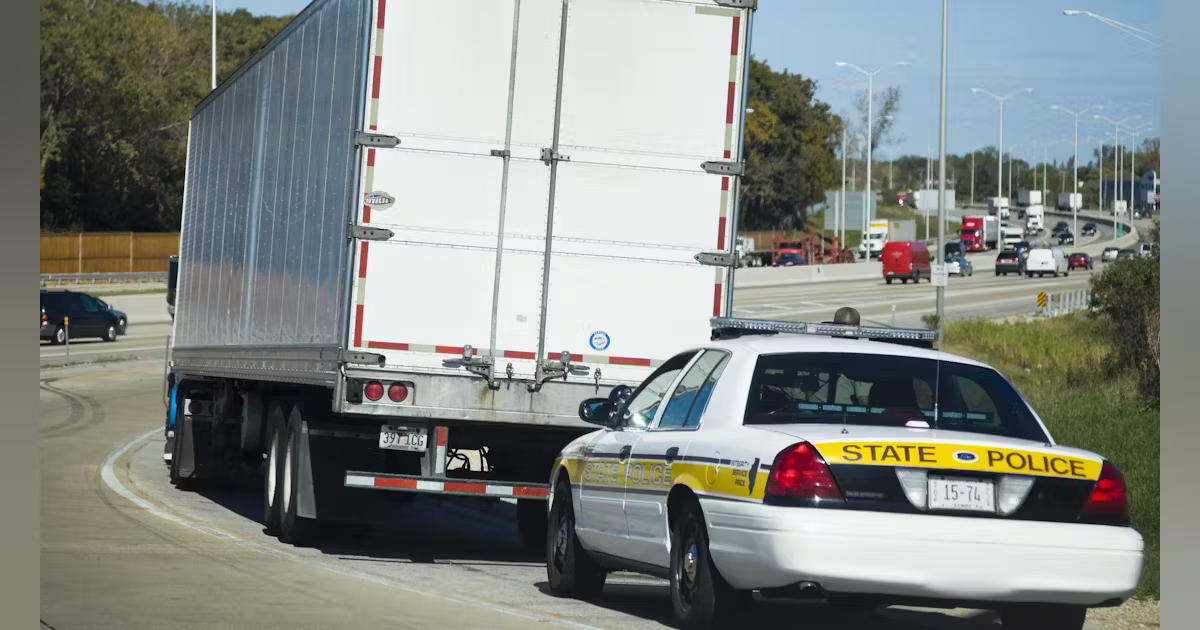🚛 FreightCaviar Print Magazine Is Here (First Issue Free)
Inside: exclusive event codes, giveaways, and stories you won’t find online.
Freight trends for 2026: fraud detection, AI-agents, ELP enforcement, and zero-emission rules, show how platforms like CtrlChain support compliant, connected, and efficient freight operations worldwide.


The freight industry enters 2026 with one focus in mind: recalibration. After several years of volatility, defined by fluctuating demand, spot-rate swings, and accelerating automation, the sector is shifting toward digital maturity. Efficiency, transparency, and traceability are no longer optional; they are at the forefront of necessity.
From fraud detection and digital verification to AI-powered forecasting and collaborative platforms, the next phase of freight is being shaped by technologies that connect data, enable actions, and enforce compliance in real time. Alongside these innovations, federal regulators such as FMCSA and state bodies are updating oversight standards to ensure that progress in automation and digitization aligns with safety, documentation, and environmental objectives.
Five major trends are setting the tone for what’s ahead in 2026.
The logistics industry is facing a surge in sophisticated fraud schemes, compelling carriers, brokers, and shippers to bolster detection capabilities. A recent report from TIA demonstrates average losses above $400,000 per incident.

Common tactics include stolen credentials, spoofed carrier identities, manipulated FMCSA contact information, and burner phone operations. Fraudsters often pose as legitimate carriers using stolen MC numbers, intercepting rate confirmations via compromised email accounts, or impersonating dispatchers through spoofed phone numbers. As FMCSA expands its National Consumer Complaint Database and sharpens its enforcement focus, digital verification tools, audit trails, and automated flagging systems are becoming critical defenses against network infiltration.

Every tender, rate confirmation, and proof of delivery is digitally signed so parties, terms, and timestamps are locked. When unusual behavior appears, such as a first-time carrier on a high-value lane, it is automatically routed to the right team for review before the load is released. The result is stronger revenue integrity without slowing operations.
Artificial intelligence has moved from concept to core infrastructure in freight. AI agents now automate quoting, carrier outreach, and document updates, while AI copilots embedded in Transportation Management Systems assist dispatchers and planners with real-time insights. Major players are following suit; C.H. Robinson has integrated generative AI into its Navisphere platform, and Ryder and ITS Logistics are deploying machine-learning tools to improve pricing and response times.
CtrlChain’s system builds on this trend with Autonomous Exception Handling, automations that chase documents and ETAs, escalating only when human input is required. Loads are assigned to carriers using operational history, performance, and service-level data, while smart flows automate repetitive problem-solving sequences like “late pickup” or “port dwell.” These capabilities show how AI is slowly becoming embedded in the daily execution of freight operations.
Regulatory uncertainty continues to define fleet planning into 2026. Many carriers anticipated the Environmental Protection Agency (EPA)’s 2027 heavy-duty emissions standards, but those timelines are now under revision, and capital investment strategies are being deferred. Recently, multiple truck manufacturers filed suit against the California Air Resources Board (CARB) over the 2023 “Clean Truck Partnership”, arguing that state and federal mandates are now conflicting.

Zero-emission-vehicle adoption is advancing only selectively, mainly in urban delivery and regional haul markets where incentives and infrastructure exist. For most of the sector, high upfront costs, weak infrastructure, and unclear funding mechanisms are holding back large-scale deployment. FMCSA and state regulators are refining their data-modernization and reporting frameworks, making it imperative for carriers to prepare for a compliance-driven transition rather than a purely operational leap.
The English Language Proficiency crackdown is in full swing and will no doubt continue its mission of carrier/driver compliance across the United States in 2026. Since June 2025, more than 3,000 truck drivers have been placed out of service for failing ELP checks during roadside inspections.

While supported by some safety advocates, the rule has drawn criticism for its uneven enforcement and potential to constrain driver supply during an already tight labor market. Carriers report that ELP-related violations have triggered operational disruptions and insurance complications, especially for fleets employing non-native English speakers.
The ELP enforcement is said to strengthen oversight in areas once considered secondary, with carriers being forced to expand compliance training, documentation, and internal auditing processes to avoid costly service interruptions.

The traditional load-board model is giving way to collaborative freight ecosystems. Shippers and carriers are joining shared digital platforms that integrate load matching, document exchange, and performance tracking into unified systems. Research into multi-carrier networks shows that shared data environments improve asset utilization, reduce both costs and emissions.
CtrlChain’s ecosystem supports this transition by connecting shippers and carriers on the same unified system, so documents, exceptions, and conversations stay in one place instead of scattered across emails., managing documents, exceptions, and chat without the clutter of back-and-forth emails. All key files, including tenders, rate confirmations, and BOLs/PODs, are centralized with clear ownership and audit trails. Real-time data from telematics and systems adds tracking, temperature logs, and compliance metrics into a single view. These features, among others, show how collaboration and compliance can coexist through shared visibility and secure data exchange.
The freight industry of 2026 stands at the intersection of innovation and regulation. Technologies like blockchain and AI are changing how freight is managed, yet lasting progress depends on aligning digital efficiency with regulatory compliance. From ELP enforcement to evolving zero-emission standards, the industry’s success now hinges on visibility, data integrity, and verified collaboration.
Companies like CtrlChain are helping aid teams navigate this transition. By combining managed transportation, carrier digitization, and an integrated TMS, CtrlChain enables logistics teams to streamline operations while staying compliant with tightening regulatory standards. Its platform simplifies day-to-day execution by automating tasks such as planning, booking, route planning, updates, and document management. This allows shippers and carriers the ability to focus on performance rather than paperwork.
2026 is fast approaching. Digital infrastructure will determine who can adapt to the new freight environment and who falls behind. Platforms built for transparency, data accuracy, and seamless collaboration will define the next phase of logistics, where compliance and efficiency are not competing priorities, but shared outcomes.
Join over 14K+ subscribers to get the latest freight news and entertainment directly in your inbox for free. Subscribe & be sure to check your inbox to confirm (and your spam folder just in case).